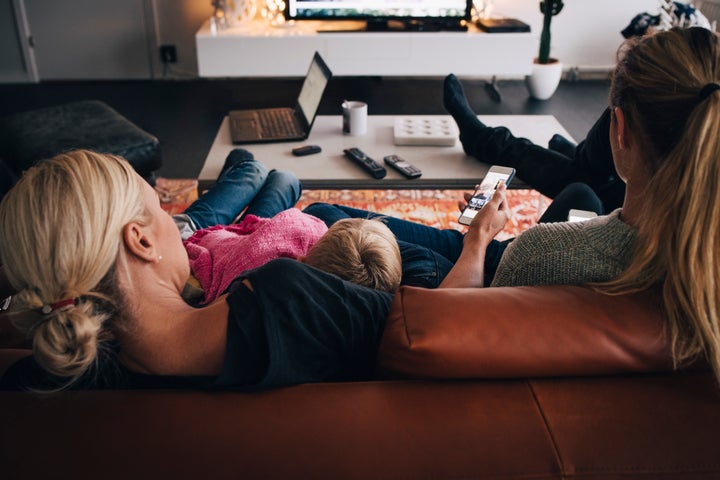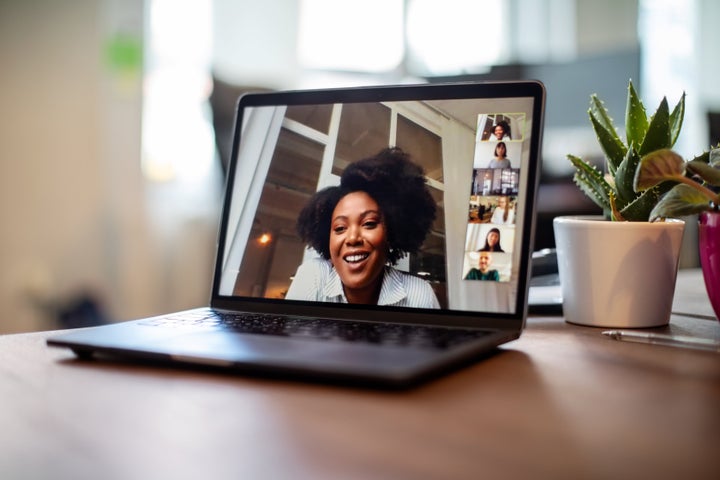At the beginning of the pandemic, several decades ago ― sorry, several months ago ― writer Harris O’Malley and his wife had very different feelings about lockdown.
Harris, who writes the dating advice blog Paging Dr. NerdLove, is a self-described extrovert. His wife tends to be more introverted, which at least initially, seemed to work in her favour in lockdown.
“She thought, ‘This is the life,’ nothing to do but stay home, take care of the house, not worry about needing to go anywhere and do anything,” Harris told HuffPost.
For Harris, no amount of Zoom happy hours, Animal Crossing and podcast listening could satisfy his extrovert needs for socialising.
“I’m a living example of why taking an extrovert and locking him in his house for six months means bad things start to happen,” he joked.
The big difference between extroverts and introverts is that introverts recharge by being at home and crave space to process information. Extroverts charge their batteries by socialising with others.
The coronavirus pandemic has complicated all that, though. Months of quarantine have proved that even introverts have their limits with “me time.”
“My partner may be an introvert, but she’s still incredibly social; she just wants to socialise at the house,” Harris said. “So now she’s planning a truly impressive number of parties that she wants to throw when the lockdown is over, including a ‘Yeet The Treats’ Halloween shindig where we fling full-size sweets at any trick-or-treaters from a safe distance.”
Another introvert-extrovert couple, writer Betsy Talbot and her extrovert husband Warren, told HuffPost that even simple conversation come with new complications because of quarantine.
“We always joke that Warren thinks by talking, and I can’t think when I’m talking. Now that there’s a lot more to think about, he needs to talk it out more,” said Talbot, the author of “Married with Luggage: What We Learned About Love by Traveling the World.” “And since I’m the only one he has to talk to most days, I’ve spent a lot more time in daily conversation than I’m used to.”
That constant chattiness can wear on Talbot, so the couple have come to a compromise: Talbot listens intently Monday through Saturday, but on Sunday, she gets a day to fully recharge and enjoy her “me” time (which for Talbot, means crocheting, reading and ― most importantly ― having “zero conversational demands” placed on her).
“All of this is to say, we’re trying hard to give each other what we need to stay healthy while taking care of ourselves, and so far this works for us,” she said.
That’s about the best an introvert and extrovert muddling through a pandemic can do, said Jennifer B. Kahnweiler, a public speaker and the author of “Creating Introvert-Friendly Workplaces.”
Given the unique challenges both personality types are facing, that understanding and compromise means everything.
Kahnweiler said that many introverts who seemed to be thriving early on in the pandemic are experiencing some lows now.
“I reached out in the early days of the quarantine to some of my introverted clients, just to make sure they were OK,” Kahnweiler said. “One of them, an introverted leader who was adjusting to leading a team from home, said he missed the informal banter with his fellow IT pros.”
Working at home full-time for him and so many other introverts isn’t the nirvana they expected. For starters, the constant Zoom happy hours and extra conference calls are utterly exhausting. The pressure those under your roof or in your social circle put on you can be taxing, too.
Still, many introverts continue to revel in the quietness and relative serenity of lockdown, said Laurie Helgoe, a psychologist and author of “Introvert Power: Why Your Inner Life Is Your Hidden Strength.”
“For me, just as my extroverted family and friends were getting restless under lockdown, I was hitting my sweet spot,” she said. “I could work remotely and engage from the quiet of my home ― our kids are grown. I could dig more deeply into projects and open up new worlds of insight and knowledge. I could pause to let ideas sink in.”
Because our lives are mostly online now, Helgoe said introverts like her have the opportunity to regulate social stimulation and engage more fully in these interactions: “I’ll stay engaged and look excited on this Zoom birthday party,” they might tell themselves, “but after an hour, I’m going to tell my friends I have to bounce to get some leftover work done.”
In other words, they’re benefiting from the space, Helgoe said.
“This is the point often missed: Introverts do not seek space to escape from relationships,” she said. “We need space to be present for relationships.”
As for extroverts, Kahnweiler said she’s surprised to see many of them coping fairly well, given their predilection for people.
“They’re tapping into their inner introvert,” she said. “They’ve experienced time to think more deeply, prepare for their day and meetings, and be more present with friends and family.”
“They’ve been learning to breathe a bit more slowly,” she added. “Extroverts are accessing those introverted qualities of engaged listening, and even embracing silence.”
Many are getting their extrovert fix by talking to friends and family while walking ― or by scheduling extra FaceTime calls with friends, Kahnweiler said.

That said, it’s taken extroverts months to get to this place of acceptance.
They struggle, Helgoe said, in large part because as a society, we tend to emphasis strong social skills but fail to instil similar solitude skills. Usually, that social preference doesn’t impact extroverts all that much, but things are clearly different now.
“There is research evidence that, while introverts can act like extroverts to adapt to situations ― think a work party ― it is harder for extroverts to act introverted,” she said. “This makes sense — introverts have long been expected to be ‘bilingual’ in order to adapt to an extroverted society.”
With social distancing, extroverts are forced to live outside their comfort zones ― and after months of staying at home, many have become pretty adept at keeping themselves entertained.
“Just as introverts often find surprising pleasures in uncomfortable places, if you’re extroverted, see if you can get a better understanding of what introverts relish about solitude,” Helgoe said.
How Introverts And Extroverts Can Work Through Their Differing Social Needs At Home
Now that we’ve looked at the different, sometimes conflicting ways introverts and extroverts are coping with this pandemic, here are some tips on how the two personality types can peacefully coexist.
Don’t take it personally if the extrovert or introvert in your life has differing socialisation needs.
It’s common for the more introverted partner to feel hurt or rejected when their extroverted partner feels depleted or in need of socialisation. It can leave the introverted partner feeling as though they’re not enough. After all, their spouse or roommate isn’t entirely alone.
When that concern isn’t verbalised, the extroverts may move ahead with their plans to schedule Skype or Zoom sessions with friends and family. But for the introvert, any social gatherings ― even over Skype or Zoom ― can be a drain.
“In fact, I think it can be more exhausting, since a lot of the social cues and normal interactions aren’t there and we all have to work harder to process non-verbal information like tone of voice, facial expressions and what body language signals we can see,” O’Malley said. “That can drain an introvert’s batteries even faster, making them more likely to want to check out early, or skip them entirely.”
As O’Malley has learned firsthand in his own introvert-extrovert marriage, the key to harmony between the two types is to find the right balance.
“You have to allow the introvert to participate or not in Zoom calls, depending on their mood and energy level, while allowing extroverts space to try to meet their social needs,” he said.
O’Malley also said that introverts need to recognise that the extrovert’s need to socialise with more people doesn’t have anything to do with the quality of their relationship or the strength of their connection. That need exists separately from their partner or friends.

Don’t be afraid to ask your partner or flatmate about their social needs at at given time.
Months of quarantine have taught Talbot and her husband to be transparent about their socialising needs. Instead of talking her head off, Talbot’s extrovert husband will straight-up ask if she’s in the mood for a good chat.
“Introverts will always appreciate these three statements when you’re unsure what we need: 1) Do you want us to just be quiet together for a while? 2) It’s OK with me if you want to cancel these plans. 3) When would be a good time to talk about [whatever you want to talk about with your introvert that takes longer than 2 minutes]?” Talbot said.
On the flip side, if you’re an introvert and sense that your extrovert partner is itching to talk, inquire with them. If they seem bothered while working from home, ask if they’d like to hash something out with you. If they seem starved for socialising, schedule a fun remote game night with your friends or family members. If you feel comfortable eating out, see about making a reservation for an al fresco dinner at your favourite restaurant.
The bottom line? Now, more than ever, it’s important to be accommodating and as explicit as possible in voicing your needs.
Be adaptable in the ways you come together as a couple, family or house.
Again, communication is vital. We all have different needs for mental nourishment, whether you’re an introvert, an extrovert or a somewhere-in-between ambivert. When figuring out the best ways to connect (as a couple, as roommates, as a family) stay in conversation about what’s working for you and what categorically isn’t working for you.
“I heard Michelle Obama say on her recent podcast that her family disperses in the day but gets together at night for board games,” Kahnweiler said. “My husband and I have a standing date to watch ‘Jeopardy!’ reruns. Not too exciting, but it is a fun ritual we have created to make sure we still see each other. We’re making it work.”
Don’t forget to check in on your introvert and extrovert friends.
When reaching out to your friends with different personality styles, be mindful of their communication style. Dealing with an extrovert? You know how much they love to talk, so make sure you carve a good chunk of time to chat.
“Extroverts tend to work through their ideas out loud so expect to do some brainstorming,” Kahnweiler said.
Is the person an introvert? Slow down, pause, and give them time to reflect and respond, Kahnweiler said. And don’t surprise introverts too often with impromptu phone calls. Text first. Your introvert friend will thank you.